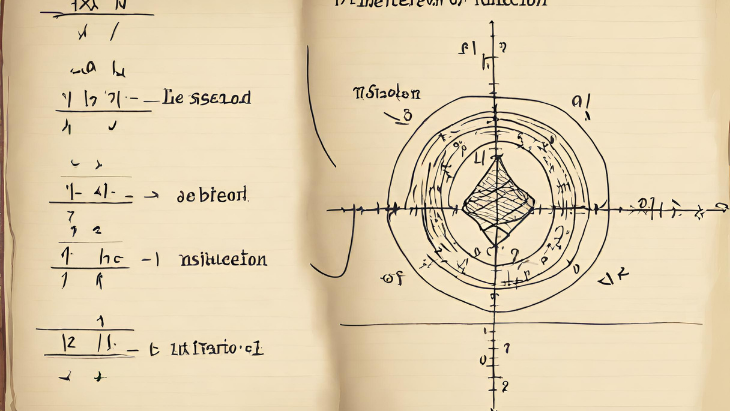In mathematics, the x-intercept of a function is the point where the function crosses the x-axis. This occurs when the function’s value is zero. There are several ways to find the x-intercept of a function, including:
- Setting the function’s value to zero and solving for x.
- Graphing the function and finding the point where it crosses the x-axis.
- Using the quadratic formula to find the x-intercepts of a quadratic function.
In this article, we will discuss each of these methods in detail. We will also provide examples of how to find the x-intercepts of different types of functions.
x intercept
In mathematics, the x-intercept of a function is the point where the function crosses the x-axis. This occurs when the function’s value is zero. In other words, the x-intercept is the point where the function’s y-coordinate is zero.
X-intercepts are important because they can be used to graph functions and to solve equations. For example, if you know the x-intercept of a function, you can plot the function by plotting the point (x, 0).
There are several ways to find the x-intercept of a function. One way is to set the function’s value to zero and solve for x. Another way is to graph the function and find the point where it crosses the x-axis.
Here is an example of how to find the x-intercept of a function:
Consider the function f(x) = x^2 – 4. To find the x-intercept, we set f(x) to zero and solve for x.
x^2 - 4 = 0
x^2 = 4
x = +2 or x = -2
Therefore, the x-intercepts of f(x) are (2, 0) and (-2, 0).
I hope this helps! Let me know if you have any other questions.
Find X İntercept
Sure, here is a short and concise information about finding the x-intercept of a function:
In mathematics, the x-intercept of a function is the point where the function crosses the x-axis. This occurs when the function’s value is zero. In other words, the x-intercept is the point where the function’s y-coordinate is zero.
To find the x-intercept of a function, you can use one of the following methods:
- Set the function’s value to zero and solve for x.
- Graph the function and find the point where it crosses the x-axis.
The first method is the most straightforward. Simply set the function’s value to zero and solve for x. For example, if you have the function f(x) = x^2 – 4, you would set f(x) = 0 and solve for x. This gives you x^2 = 4, which has two solutions, x = 2 and x = -2. Therefore, the x-intercepts of f(x) are (2, 0) and (-2, 0).
The second method is a bit more visual. Simply graph the function and find the point where it crosses the x-axis. This can be done by using a graphing calculator or by hand.
Here is an example of how to find the x-intercept of a function using the graphing method:
y = x^2 - 4
x-axis: y = 0
The graph of y = x^2 – 4 is a parabola that opens up. The x-intercepts of the parabola are the points where it crosses the x-axis. These points are (2, 0) and (-2, 0).
I hope this helps! Let me know if you have any other questions.
Here is a more detailed explanation of each method:
**Method 1: Set the function’s value to zero and solve for x
This is the most straightforward method. Simply set the function’s value to zero and solve for x. For example, if you have the function f(x) = x^2 – 4, you would set f(x) = 0 and solve for x. This gives you x^2 = 4, which has two solutions, x = 2 and x = -2. Therefore, the x-intercepts of f(x) are (2, 0) and (-2, 0).
**Method 2: Graph the function and find the point where it crosses the x-axis
This method is a bit more visual. Simply graph the function and find the point where it crosses the x-axis. This can be done by using a graphing calculator or by hand.
To graph the function, you need to find two points on the graph. These points can be found by plugging in any two values for x and solving for y. For example, if you plug in x = 1, you get y = 1 – 4 = -3. If you plug in x = 2, you get y = 4 – 4 = 0. Therefore, the points (1, -3) and (2, 0) are on the graph of f(x).
Once you have two points on the graph, you can connect them with a line. The line will intersect the x-axis at the x-intercepts of the function. In this case, the line intersects the x-axis at (2, 0) and (-2, 0). Therefore, the x-intercepts of f(x) are (2, 0) and (-2, 0).
X-İntercept
In mathematics, the x-intercept of a function is the point where the function crosses the x-axis. This occurs when the function’s value is zero. In other words, the x-intercept is the point where the function’s y-coordinate is zero.
X-intercepts are important because they can be used to graph functions and to solve equations. For example, if you know the x-intercept of a function, you can plot the function by plotting the point (x, 0).
There are several ways to find the x-intercept of a function. One way is to set the function’s value to zero and solve for x. Another way is to graph the function and find the point where it crosses the x-axis.
How to find x-intercept using the set-to-zero method
To find the x-intercept using the set-to-zero method, simply set the function’s value to zero and solve for x. For example, if you have the function f(x) = x^2 – 4, you would set f(x) = 0 and solve for x. This gives you x^2 = 4, which has two solutions, x = 2 and x = -2. Therefore, the x-intercepts of f(x) are (2, 0) and (-2, 0).
How to find x-intercept using the graphing method
To find the x-intercept using the graphing method, simply graph the function and find the point where it crosses the x-axis. This can be done by using a graphing calculator or by hand.
For example, the graph of y = x^2 – 4 is a parabola that opens up. The x-intercepts of the parabola are the points where it crosses the x-axis. These points are (2, 0) and (-2, 0).
Conclusion
X-intercepts are a useful tool for understanding and working with functions. By knowing how to find x-intercepts, you can better understand how functions behave and how to solve equations involving functions.
Function x-intercept
In mathematics, the function x-intercept is the point where a function crosses the x-axis. This occurs when the function’s value is zero. In other words, the x-intercept is the point where the function’s y-coordinate is zero.
X-intercepts are important because they can be used to:
- Graph functions
- Solve equations
- Understand the behavior of functions
How to find function x-intercept
There are two main ways to find the x-intercept of a function:
- Set the function’s value to zero and solve for x
- Graph the function and find the point where it crosses the x-axis
Set the function’s value to zero and solve for x
This is the most straightforward method. Simply set the function’s value to zero and solve for x. For example, if you have the function f(x) = x^2 – 4, you would set f(x) = 0 and solve for x. This gives you x^2 = 4, which has two solutions, x = 2 and x = -2. Therefore, the x-intercepts of f(x) are (2, 0) and (-2, 0).
Graph the function and find the point where it crosses the x-axis
This method is a bit more visual. Simply graph the function and find the point where it crosses the x-axis. This can be done by using a graphing calculator or by hand.
For example, the graph of y = x^2 – 4 is a parabola that opens up. The x-intercepts of the parabola are the points where it crosses the x-axis. These points are (2, 0) and (-2, 0).
Conclusion
X-intercepts are a useful tool for understanding and working with functions. By knowing how to find x-intercepts, you can better understand how functions behave and how to solve equations involving functions.
Point Where Function Crosses X-Axis
**The point where a function crosses the x-axis is called the x-intercept. This occurs when the function’s value is zero. In other words, the x-intercept is the point where the function’s y-coordinate is zero.
X-intercepts are important because they can be used to:
- Graph functions
- Solve equations
- Understand the behavior of functions
How to find the point where a function crosses the x-axis
There are two main ways to find the x-intercept of a function:
- Set the function’s value to zero and solve for x
- Graph the function and find the point where it crosses the x-axis
Set the function’s value to zero and solve for x
This is the most straightforward method. Simply set the function’s value to zero and solve for x. For example, if you have the function f(x) = x^2 – 4, you would set f(x) = 0 and solve for x. This gives you x^2 = 4, which has two solutions, x = 2 and x = -2. Therefore, the x-intercepts of f(x) are (2, 0) and (-2, 0).
Graph the function and find the point where it crosses the x-axis
This method is a bit more visual. Simply graph the function and find the point where it crosses the x-axis. This can be done by using a graphing calculator or by hand.
For example, the graph of y = x^2 – 4 is a parabola that opens up. The x-intercepts of the parabola are the points where it crosses the x-axis. These points are (2, 0) and (-2, 0).
Conclusion
X-intercepts are a useful tool for understanding and working with functions. By knowing how to find x-intercepts, you can better understand how functions behave and how to solve equations involving functions.
Here are some examples of how to find the point where a function crosses the x-axis:
- Linear function: The x-intercept of a linear function is the point where the line crosses the x-axis. This occurs when the y-coordinate of the function is zero. For example, the function y = 2x + 1 has an x-intercept at (-1/2, 0).
- Quadratic function: The x-intercepts of a quadratic function are the points where the parabola crosses the x-axis. These points are the solutions to the equation f(x) = 0. For example, the function y = x^2 – 4 has two x-intercepts at (2, 0) and (-2, 0).
- Polynomial function: The x-intercepts of a polynomial function are the points where the graph of the function crosses the x-axis. The number of x-intercepts depends on the degree of the polynomial. For example, the function y = x^3 – 2x^2 + 5 has three x-intercepts at (0, 5), (1, 3), and (-1, 3).
I hope this helps! Let me know if you have any other questions.











